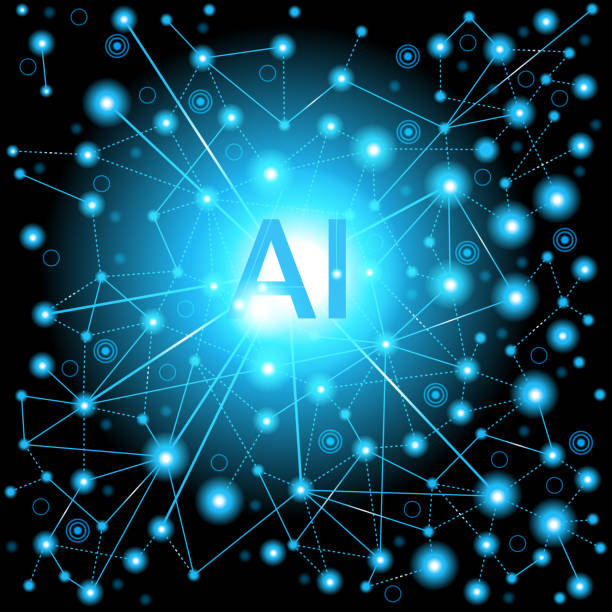Natural Language Processing, often abbreviated as NLP, is a subfield of artificial intelligence (AI) and computational linguistics devoted to enabling computers to understand, interpret, generate, and interact with human language in a meaningful way. It bridges the gap between human communication and machine comprehension, allowing computers to process vast amounts of linguistic data—spoken or written—just as humans do.
At its core, NLP combines principles from linguistics, computer science, and mathematics to model human language in a computationally efficient manner. It is the science of teaching machines how to understand the subtleties of natural language, including context, tone, sentiment, and ambiguity. From translation systems and chatbots to search engines, sentiment analysis, and virtual assistants like Siri or Alexa, NLP powers many technologies that have become essential to everyday life.
The importance of NLP lies in its ability to transform unstructured human language into structured, analyzable data that computers can act upon. Since more than 80% of all data generated by humans is in textual or linguistic form, NLP serves as the key to unlocking insights from this vast ocean of information. Understanding what NLP is, how it works, and why it matters provides a window into one of the most transformative technologies of the modern digital age.
The Evolution of Natural Language Processing
The journey of NLP began long before the rise of modern artificial intelligence. Its roots stretch back to the 1950s, when the idea of communicating with machines using human language first emerged. Early research was driven by the desire to translate text automatically between languages—a reflection of the post-war political and technological ambitions of the time.
One of the earliest and most influential projects was the Georgetown-IBM experiment in 1954, which demonstrated a rudimentary system translating Russian sentences into English. Although it could handle only a limited set of phrases, it sparked immense optimism about the future of machine translation. Many believed that fully automated translation was only a few years away. However, those early systems relied on simple rule-based methods that quickly proved inadequate when faced with the complexity and ambiguity of real-world language.
Throughout the 1960s and 1970s, NLP research was dominated by rule-based approaches, heavily influenced by formal linguistics. Researchers attempted to represent grammar and meaning using handcrafted rules and dictionaries. These systems were built upon linguistic theories such as Chomsky’s generative grammar, which sought to describe language through a formal set of syntactic rules.
Despite some progress, these early approaches encountered severe limitations. Human language is rich, irregular, and context-dependent, making it impossible to manually encode all grammatical and semantic variations. By the 1980s, the limitations of purely symbolic systems became apparent, and a new era began with the rise of statistical and probabilistic methods.
In this period, NLP underwent a paradigm shift. Instead of relying on handcrafted rules, researchers began to use large datasets—called corpora—and statistical models to infer language patterns automatically. This shift was enabled by two key developments: the availability of large digital text datasets and the increasing power of computers. Algorithms such as Hidden Markov Models (HMMs), n-gram models, and decision trees laid the foundation for machine learning in NLP.
By the late 1990s and early 2000s, NLP became one of the driving forces behind modern AI. With the advent of the internet, digital communication exploded, producing vast amounts of text data from websites, emails, and social media. Machine learning-based NLP models powered search engines, spam filters, and early recommendation systems.
In the 2010s, the field experienced another revolution with the rise of deep learning. Neural networks, especially architectures such as Recurrent Neural Networks (RNNs), Long Short-Term Memory (LSTM) networks, and later Transformers, transformed the landscape of NLP. Instead of manually engineering linguistic features, deep learning models could learn language representations directly from raw data.
The introduction of the Transformer architecture in 2017, and models like BERT (Bidirectional Encoder Representations from Transformers) and GPT (Generative Pre-trained Transformer), marked a turning point. These large-scale language models achieved unprecedented performance in translation, summarization, question answering, and conversational AI. Modern NLP systems now exhibit capabilities once thought to be purely human—composing essays, generating poetry, answering questions, and engaging in dialogue with remarkable fluency.
The Core Objectives of NLP
The fundamental goal of NLP is to enable seamless interaction between humans and machines through language. However, this goal encompasses multiple layers of complexity. Understanding a sentence requires more than recognizing words—it demands comprehension of grammar, context, intention, and even cultural nuance.
At the lowest level, NLP involves the recognition of linguistic structure: identifying words, parsing sentences, and analyzing syntax. At higher levels, it aims to capture meaning and inference—understanding what the text means rather than just what it says. This involves semantic interpretation, discourse analysis, and pragmatics.
NLP also strives to bridge the two-way communication between humans and machines. It not only interprets human input but also generates natural, contextually appropriate responses. This dual capability underlies technologies like voice assistants, automated translators, and AI writing tools.
Ultimately, NLP is about modeling human language in a way that computers can process and reason about it, enabling tasks like translation, summarization, question answering, information retrieval, and more.
The Linguistic Foundations of NLP
NLP stands at the intersection of computer science and linguistics. To process language effectively, NLP systems must incorporate principles from various linguistic subfields, each addressing a different aspect of language structure and meaning.
Phonetics and phonology deal with the sounds of language, which are crucial for speech recognition and synthesis. Morphology studies the internal structure of words, enabling systems to recognize relationships between words like “run,” “running,” and “runner.” Syntax focuses on how words combine to form grammatical sentences, while semantics concerns the meanings of words and sentences. Pragmatics explores how context affects meaning—for example, how “Can you open the door?” is a request, not merely a question about ability.
Each of these levels contributes to building comprehensive NLP systems. A speech recognition system, for instance, must handle phonetic variation and contextual disambiguation, while a chatbot must interpret both syntax and pragmatics to respond appropriately.
Rule-Based NLP: The Early Era
The earliest NLP systems were built using rule-based methods. In this approach, experts manually crafted sets of linguistic rules and patterns to represent the grammatical and semantic properties of a language. For example, a system might have a rule stating that a noun phrase consists of a determiner followed by an adjective and a noun.
These systems worked well in controlled domains but failed to scale to real-world language. They struggled with ambiguity—the fact that most words and sentences can have multiple interpretations. For example, the word “bank” can refer to a financial institution or the side of a river, and the correct meaning depends on context. Encoding all such variations manually was impossible.
Despite these challenges, rule-based NLP laid important groundwork for future developments. It introduced the idea of formal grammars, parsing algorithms, and lexical databases—concepts that still influence modern systems. Projects like WordNet, a lexical database mapping relationships between words, emerged from this tradition and continue to be used in NLP research today.
Statistical and Machine Learning Approaches
The limitations of rule-based systems led to the rise of statistical methods, which represented a major shift in NLP. Instead of handcrafting rules, researchers began to build models that learned from data. The idea was that language patterns could be inferred statistically by analyzing large corpora of text.
For example, an n-gram model estimates the probability of a word given its preceding words, allowing systems to predict likely word sequences. If the model learns that “New” is often followed by “York,” it can use that information to disambiguate text. Hidden Markov Models further enabled part-of-speech tagging and speech recognition by modeling sequential dependencies in data.
This data-driven revolution made NLP systems more adaptable and scalable. Machine learning algorithms could generalize from examples and handle noisy, diverse data. As computing power increased and datasets grew, statistical NLP became the standard approach for applications like translation, sentiment analysis, and document classification.
The Deep Learning Revolution
The emergence of deep learning marked the most significant transformation in NLP’s history. Neural networks allowed computers to learn hierarchical representations of language automatically, capturing complex patterns that traditional statistical models could not.
Early deep learning models, such as RNNs and LSTMs, were particularly suited for sequential data like text. They could process sentences word by word while maintaining contextual memory, enabling more fluent translation and text generation.
The next leap came with word embeddings, which represented words as dense vectors in a continuous space. Models like Word2Vec and GloVe learned these embeddings from large corpora, capturing semantic relationships such as “king – man + woman = queen.” These distributed representations allowed models to understand analogies, similarity, and context in a more human-like way.
The real breakthrough, however, came with the Transformer architecture, introduced in 2017. Transformers replaced sequential processing with an attention mechanism that allowed models to focus on relevant parts of the input simultaneously. This innovation enabled training on massive datasets and led to models such as BERT, GPT, and T5.
These large language models (LLMs) represent the state of the art in NLP. Trained on billions of words, they can perform a wide variety of tasks with little or no fine-tuning—a property known as few-shot or zero-shot learning. LLMs are now capable of writing essays, generating code, summarizing documents, and even holding conversations that resemble human dialogue.
Key Applications of NLP
Natural Language Processing has become a cornerstone of modern digital life. Its applications span nearly every domain where humans interact with text or speech.
Machine translation, one of the oldest goals of NLP, has achieved remarkable success through models like Google Translate and DeepL. These systems use deep neural networks to translate text between hundreds of languages with increasing fluency.
Speech recognition and synthesis enable voice assistants, transcription services, and accessibility tools. Systems like Siri, Alexa, and Google Assistant rely on NLP to understand spoken commands and respond naturally.
Sentiment analysis allows companies to gauge public opinion by analyzing social media, reviews, and feedback. Question-answering systems and chatbots power customer support and education platforms, providing instant, automated interaction.
Other applications include text summarization, plagiarism detection, information retrieval, and medical language processing, where NLP extracts meaning from clinical records and research papers to aid diagnosis and discovery.
Challenges in Natural Language Processing
Despite remarkable progress, NLP still faces significant scientific and practical challenges. Human language is extraordinarily complex and context-dependent. Ambiguity, idiomatic expressions, sarcasm, and cultural references all pose difficulties for even the most advanced models.
One major challenge is context understanding. While models can process vast text corpora, they often fail to grasp deeper context or world knowledge. For instance, understanding the sentence “The trophy didn’t fit in the suitcase because it was too small” requires reasoning about physical size, not just word statistics.
Another issue is bias and fairness. Since models learn from human-generated data, they inevitably absorb the biases present in society. This can lead to discriminatory or harmful outputs, especially in applications like hiring or law enforcement. Ensuring ethical and unbiased NLP remains a critical area of research.
Data scarcity also limits performance in low-resource languages that lack large annotated corpora. Most progress has been concentrated in English and other widely used languages, creating inequality in NLP accessibility.
Furthermore, explainability is a growing concern. Deep learning models are often black boxes—producing impressive results but offering little insight into how they reach conclusions. Understanding and interpreting these models is essential for transparency, accountability, and trust.
The Role of Data and Annotation
Data is the lifeblood of NLP. The quality, size, and diversity of datasets determine the effectiveness of models. Creating annotated corpora—collections of texts labeled with linguistic or semantic information—is one of the most labor-intensive aspects of NLP.
Tasks such as part-of-speech tagging, sentiment labeling, and named entity recognition require human expertise. Although crowdsourcing and semi-supervised methods have reduced the burden, building reliable datasets remains expensive and time-consuming.
Recent advances in self-supervised learning have reduced dependence on labeled data. Models like BERT and GPT learn from raw text by predicting masked words or the next sentence, leveraging patterns in unlabeled data. This approach has dramatically expanded the potential of NLP across domains and languages.
Ethics and Responsibility in NLP
As NLP systems become more powerful, ethical considerations grow increasingly important. Language is a human construct that reflects culture, identity, and values. When machines process or generate language, they can influence perception, behavior, and decision-making at scale.
Misinformation, hate speech, and deepfakes are among the most pressing concerns. NLP-powered systems can inadvertently amplify harmful content or generate convincing falsehoods. Responsible development therefore requires mechanisms for bias detection, content moderation, and model transparency.
Moreover, privacy is a vital issue. NLP applications that process personal communications, such as emails or voice commands, must ensure data security and user consent.
The future of NLP depends not only on technical innovation but also on ethical stewardship—building systems that are inclusive, transparent, and aligned with human values.
The Future of Natural Language Processing
NLP is evolving faster than ever, driven by advances in computational power, data availability, and theoretical understanding. The next generation of systems aims for deeper comprehension, reasoning, and personalization.
Research is moving toward multimodal NLP, integrating text with other data types like images, audio, and video. Models that combine language and vision—such as CLIP or GPT-4’s multimodal architecture—can interpret complex inputs and generate more context-aware outputs.
Another frontier is interactive learning, where models continuously improve through conversation and feedback, adapting to user preferences and goals.
Efforts to democratize NLP for low-resource languages are also expanding, with initiatives to build multilingual corpora and transfer learning frameworks that generalize across linguistic boundaries.
Finally, the integration of symbolic reasoning with neural models may yield systems capable of true understanding—combining statistical learning with logical inference to reason about the world like humans do.
Conclusion
Natural Language Processing stands as one of the most remarkable achievements of modern artificial intelligence. It represents humanity’s effort to endow machines with the ability to understand and use language—the most defining feature of our species. From its humble beginnings in rule-based translation experiments to the era of large-scale deep learning models, NLP has evolved into a sophisticated discipline that touches nearly every aspect of life.
Through NLP, machines can now read, write, speak, and even engage in dialogue with humans in ways once imagined only in science fiction. Yet, despite this progress, the journey is far from over. The complexity of human language ensures that NLP will continue to be a field of deep exploration, innovation, and philosophical reflection.
In essence, Natural Language Processing is not merely about teaching computers to process words—it is about teaching them to grasp meaning, context, and emotion. It is a quest to bridge the gap between human intelligence and artificial understanding, transforming how we communicate, learn, and connect in an increasingly digital world.






